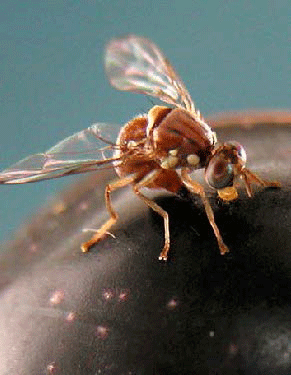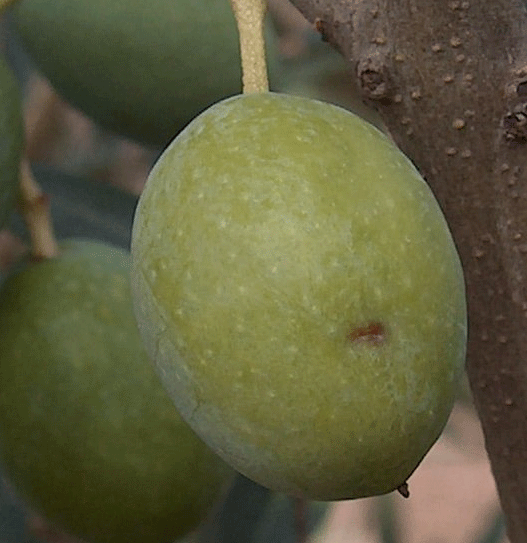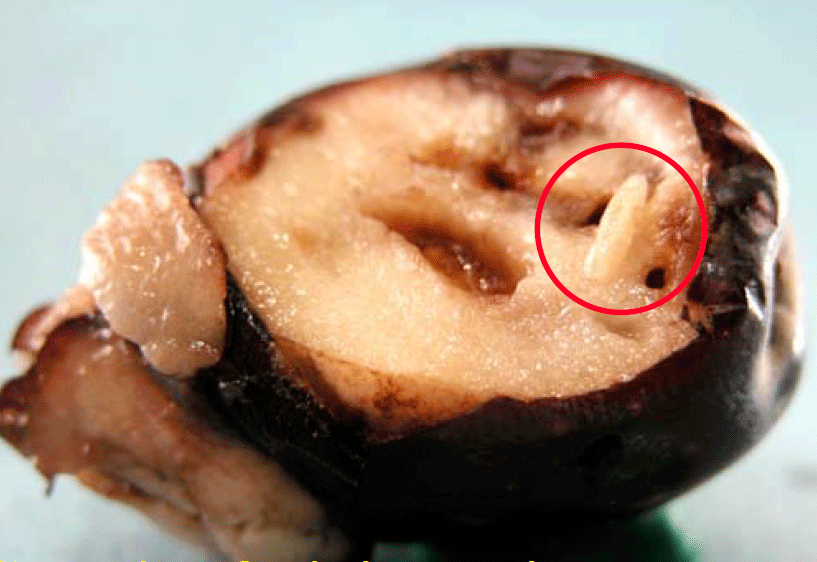The Olive Fruit Fly Poses a Real |
   |
The ProblemThe Olive Fruit Fly (OLF) poses a serious threat to the California table olive and olive oil industries. Olives grown by homeowners for home curing or oil are equally at risk. A native of eastern Africa, it is considered the most damaging pest of olives in southern Europe, North Africa, and the Middle East. The olive fruit fly was first detected in North America infesting olive fruits on landscape trees in Los Angeles County in November 1998. It can now be found throughout the state. The adult olive fruit fly is about 1/4 inch long. The head, thorax, and abdomen are brown with darker markings and several white or yellow patches on the top and sides of the thorax. Its wings are positioned horizontally and are held away from the body. Olive fruit flies may be distinguished from related fruit flies by the presence of black spots on the wing tips and the lack of banding across the wings that occurs in most other related species such as the walnut husk fly, apple maggot, and Mediterranean fruit fly. Females can be distinguished from males by the presence of an ovipositor, a dark-colored pointed structure at the end of the abdomen, which is used to pierce olive fruit and lay eggs. Usually only one egg is laid per fruit. However, multiple eggs may be laid in olive varieties that produce large fruit; females prefer large-fruited varieties to smaller-fruited ones for egg laying. Larvae are yellowish white, legless maggots with pointed heads. When first hatched, they are immediately below the surface, tiny and difficult to see. After they have been feeding for a while, they are easier to locate, especially when the fruit has begun to rot. (excerpted from http://www.ipm.ucdavis.edu/PMG/PESTNOTES/pn74112.html) |
A Solution to Fly DamageFrom the comments we’ve received, we think mass trapping using any type of trap and GF-120 are inadequate to control the fly populations sufficiently to keep the damage down to acceptable levels. The Magnet OL’s manufacturer decided to increase their order minimums and place other restrictions on us. So, we will not be offering or using the trap this year. We’ve come to the conclusion that mass trapping only reduces the fly populations. We are not offering the Magnet™ OL Attract and Kill Trap for 2015 It was the Surround WP that saved our olives! So this year, we are going to:1. Set and charge our yeast traps and keep them charged throughout the season. 2. Adopt a restricted watering schedule prior to ripening as we always do. 3. Spray a single application of Surround WP (kaolin clay) at pit hardening in mid-June. We are prepared to do a second application but because of the early ripening last year, we did not have to. We have reports from growers on the coast that due to the effects of dew formation, reapplication of Surround may be required. 4. Careful sanitization of the orchard after harvest. Here is a supplier for Surround WP http://www.groworganic.com/surround-25-lb.html You can get an operator’s number from your Ag Dept |
Pest Management OptionsCurrent Pest Control Methods Include: Spinosad - Dow recommends GF-120 should be applied every 7 days in alternating rows. Use of the Magnet™ OL can reduce the number of applications saving labor and material costs. We have had many growers report they still experienced severe fly damage after using this product weekly. Kaolin Clay - Surround was very effective for us in eliminating fly damage. Ball Traps and Olipe Traps are far less effective than the Magnet™ OL and require diligence throughout the season to recharge them. None of these traps will control the fly populations sufficiently to eliminate damage.
|